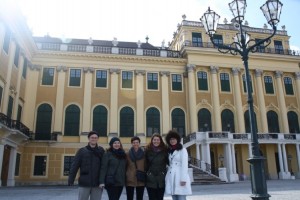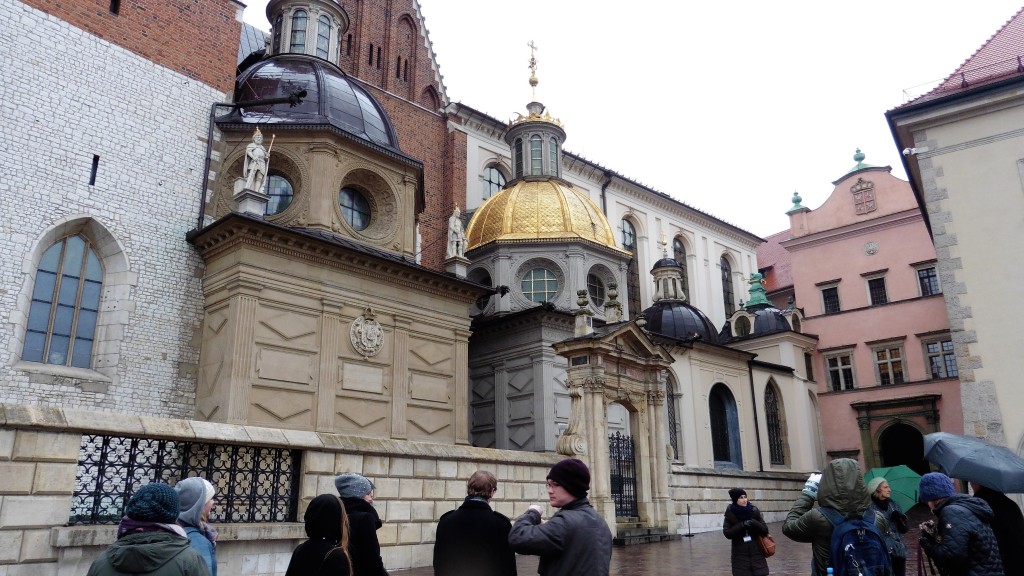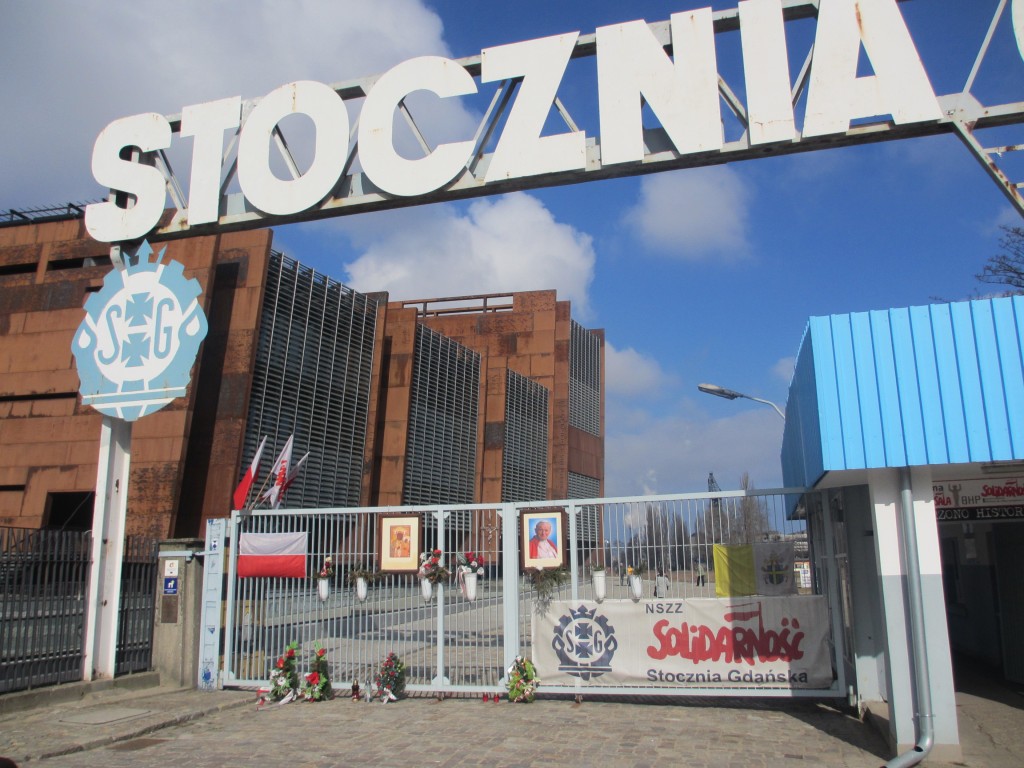Schönbrunn – Sehr schön indeed!

From left to right: Ira, Phoebe, Carol, Helen, Janine Ludwig
We were really lucky to experience the Schönbrunn Palace on the sunniest day of our excursion! Only a twenty-minute train ride outside the city center, this absolutely stunning palace and gardens really lives up to its name with an unbelievable self-guided tour through the regal halls and rooms of the summer home of the Hapsburg Emperors and Empresses, most notably Maria Theresia and Elisabeth “Sissi”. From finely enameled wallpaper and portraits to bejeweled mirrors, chandeliers and furniture it was really exciting to experience the wealth of the empire and imagine living in a time where one might actually attend a ball in the great hall. The gardens and grounds were also gorgeous and provided an awesome view of the city from the short hike up the hill! >Helen Schlimm<

Schönbrunn Gardens: Ira Lauer, Helen Schlimm, Carol Rynar, Phoebe Allebach (from left to right)
The National Library
One of my favorite experiences on this trip was our visit to the national library. Thanks to  our program, we were given this unique opportunity that we would not have otherwise had, had we just visited on our own. (It was incredibly satisfying to be ushered behind a red velvet rope to an off-limits section of the library for a closer look at the books while normal tourists watched jealously on.) We were given a private tour by a very knowledgeable and friendly professor, who gave us a thorough history of the library building as well as of the books. We began outside the doors with a description of the library’s impressive exterior before we headed up the Stiege (a new regional German word was learned on the way up the stairs) and I was able to use the same key Maria Theresa used during the 18th Century to open the large library door into one of the most beautiful and priceless rooms I have ever seen.
our program, we were given this unique opportunity that we would not have otherwise had, had we just visited on our own. (It was incredibly satisfying to be ushered behind a red velvet rope to an off-limits section of the library for a closer look at the books while normal tourists watched jealously on.) We were given a private tour by a very knowledgeable and friendly professor, who gave us a thorough history of the library building as well as of the books. We began outside the doors with a description of the library’s impressive exterior before we headed up the Stiege (a new regional German word was learned on the way up the stairs) and I was able to use the same key Maria Theresa used during the 18th Century to open the large library door into one of the most beautiful and priceless rooms I have ever seen.

Students looking at an original Luther bible from the 16th century, adorned with paintings from Lucas Cranach the Elder!
We learned how to read a bit of the symbolism painted on the impressive ceiling fresco before we had the opportunity to actually read (and handle!) two texts from the Habsburg collection from the 16th Century. Vienna is a city full of history, that fact can be grasped easily enough just by walking down the street, but to actually hold in your hands a document so incredibly old and so carefully cared for helped me to appreciate how valuable such history is and how concerned Vienna is with conserving it. From the Schatzkammer to the Kunsthistorisches Museum even to the Kaisergruft, it is obvious the Habsburgs liked to collect priceless artefacts, but I think it is safe to say that the Nationalbibliothek contained Vienna’s most impressive collection. >Carol Rynar<
One of the best experiences of my time in Vienna was our city tour. Vienna is such an old and beautiful city with nearly 1000 years of history. Walking through the city’s streets lined with architecture from Baroque to Art Nouveau was out of the world and will be a life-long memory. >Ira Lauer<
Academic substance

The broader theme of this excursion is German-Austrian history and culture from the middle ages until today. In three introductury lectures, I lead the students back to the origins of what is “German,” (an umbrella term coined by Tacitus) and why we are named after different tribes in other languages, like “Allemannen”, a.k.a. Swabians or “Deutsch,” stemming from “theodisk” which actually means belonging to the people / folk-like. From the defeat of the Romans in the Battle of the Teutoburg Forest through the migration period, we follow the emergence of the Holy Roman Empire of the German Nation, from Charles the Great (800) to its dissolution after the Napoleonic conquests (1806) using historic maps and documentaries. At the same time, we track the rise of the Habsburg dynasty from 1273 until 1918 and the overlapping of the Austro-Hungarian k.u.k Monarchy, later the Austrian Empire (1804-1918) with the German Empire (1871-1918). Backed up with this information, the students can better understand the museum exhibits and grasp the importance of Vienna as a former political and cultural center of Europe. And additionally, we indulge in the imperial glamour and the culinary abundance of this beautiful city. >Dr. Janine Ludwig<









